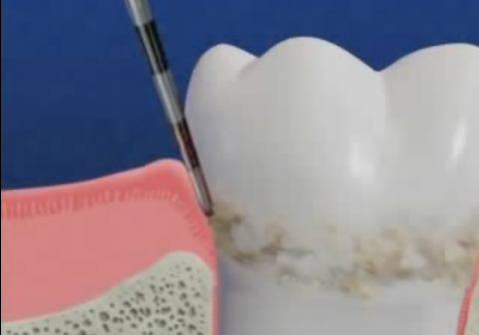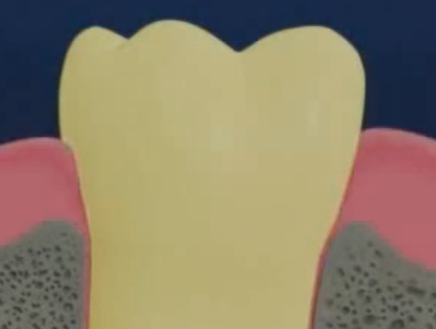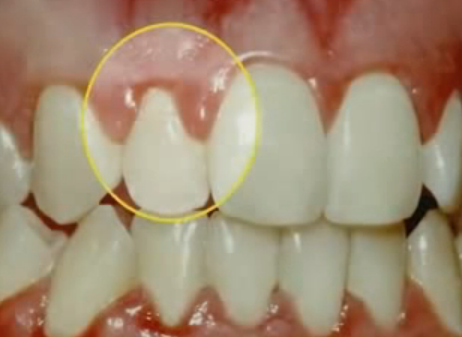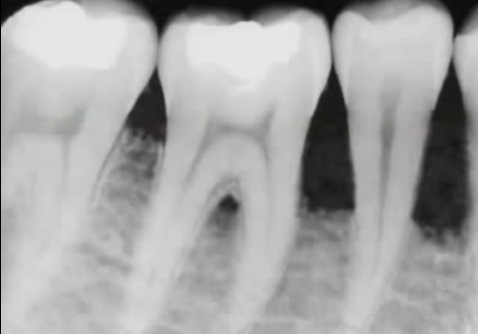Gum disease, also referred to as periodontitis,is an infection of the gums which causes the decay of the soft tissues of the gum and destroys the bones that hold the teeth. An unattended case of gum disease may create health complications such as heart attack or stroke etc.About one to two percent of the population gets affected by periodontitis.
Gum disease is very common among people who follow or maintain poor oral hygiene. Simple practices such as daily brushing, flossing, and professional dental cleaning can prevent the onset of gum disease.
Symptoms of gum disease
The following are some of the signs and symptoms of gum disease:
- Tender gums
- Purplish or red gums
- Swollen gums
- Receding gums
- Formation of pus between the teeth and gums
- Bad breath
- Bad taste in mouth
- Formation of new spaces between the teeth and gums
- Avoiding chewing on the side with affected teeth
- Loose teeth
When the gums bleed, look puffy and dusky red, and also bear any of the above signs of gum disease, then patients must consult a dentist. Early medical attention along with damage control measures can help avoids other complications.
Causes of gum disease
Gum disease starts with a sticky film of plaque comprising of bacteria that forms on starch and sugar left between the teeth and gums.Interactions of bacteria with food particles form the plaque.
The plaque that remain between the teeth, gumline for two or three days become a hard tartar, which then poses great difficulties in removal of plaque. Buildup of tartar also helps the bacteria to grow and thrive.
The longer is the stay of tartar and plaque in the gum lines, more is the damage they can cause to the teeth and gums. In the beginning, one may feel the mildest form of irritation and inflammation of the gum due to gingivitis. Constant inflammation leads to development of pockets between the teeth and gums which fill up with Tartar, plaque, and bacteria. Deeper the pockets, more is the formation of tartar, plaque and bacteria. Such deep infections cause the loss of gum, teeth and bones.
The following are some of the factors that enhance the risk to development of gum disease
- Poor oral health practices
- Hereditary causes
- Diabetes
- Old age factor
- Gingivitis
- Tobacco use habits
- Poor nutrition
- Certain type of medications
- Reduced immunity in body
- Hormonal changes due to pregnancy and menopause
- Badly fitted dental restorations
- Substance abuse
Treatment of gum disease
The type of treatment depends on the condition of severity of gum disease. The aim of the treatment is to completely clean up the pockets of bacterial infection and prevent further damage to the gum and teeth. The treatment can be given by a dentist, a periodontist, or a dental hygienist.A routine of daily brushing, flossing and oral care makes the treatment successful.
Non-surgical treatments
Less invasive treatments are provided for simple instances of gum disease, as listed below:
- Antibiotics:The periodontist may prescribe topical or oral antibiotics to control bacterial infection. Mouth rinsing, thread insertion and/or pushing antibiotic gelsinto the bacterial pockets, are the different methods of taking topical antibiotics.However, for complete elimination of bacteria, oral antibiotics are used.
- Scaling: It is used for cleaning the tartar and bacteria from the affected teeth and gums, either by using instruments or by using ultrasonic devices.
- Root planning: It involves total cleansing and smoothening root surfaces to escape from further formation of tartar and bacteria buildup.
Surgical treatment options
Advanced cases of gum disease need surgical treatment as they do not respond to nonsurgical methods. The following are the types of surgeries performed for advanced gum disease:
- Soft tissue crafts:When the gum line recedes making the teeth look longer due to the loss of gum tissues,a surgery is performed to replace the damaged tissues by crafting it from the roof or palate of the mouth. Further gum recession is halted and the exposed roots gets cover by this surgery.
- Bone grafting:When the bone enclosing the teeth root is damaged due to gum disease, then the doctor will use small fragments of own, donated, or synthetic bone and graft it at the affected spot to prevent loss of tooth.This helps to hold the tooth in its place and also serves as a platform for re-growth of one’s own bone.
- Enamel matrix derivative application:Under this technique a specialized gel,which has the proteins that develop the enamel,is applied on the diseased tooth root to stimulate the growth of bone and tissues.
- Guided tissue regeneration:Under this technique, a biocompatible fabric piece is placed between the teeth and the bone. It allows the re-growth of original bone. The material also prevents the entry of unwanted tissues.
- Flap surgery: It is a surgery performed to reduce the pockets. The surgery also aids more effective scaling and planning. Under this surgery, the affected gum tissues are raised to re-contour the bones. Later, the gum tissues are sutured back into place.
Gum Disease Pictures



